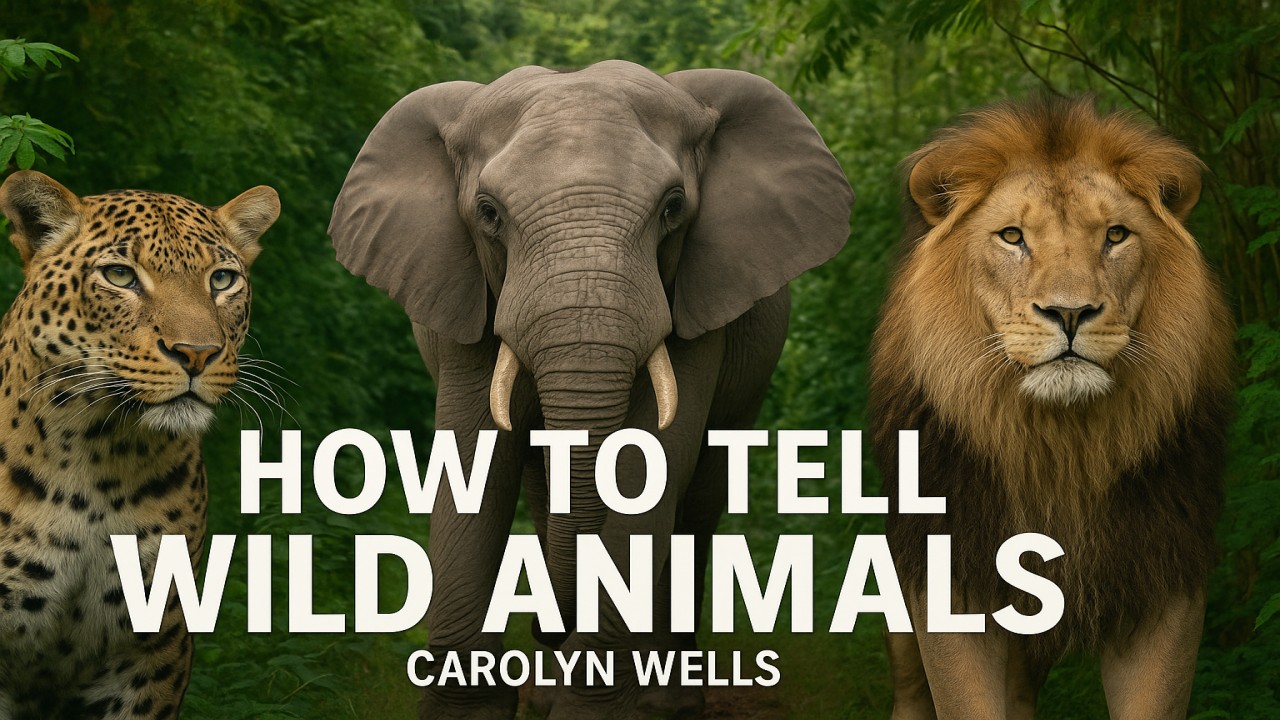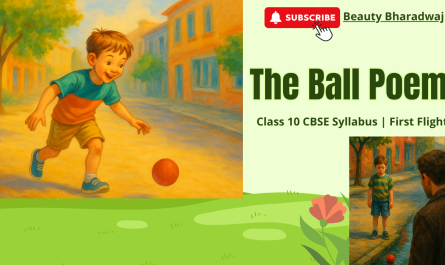Explanation | Summary | Poetic Devices | Main Themes | Class 10 CBSE Syllabus | First Flight
Short Summary of the Poem
The poet describes different wild animals in a funny and playful way. Though all these animals are dangerous, she introduces each one with humor.
First, she talks about the Asian lion. She says that if you are walking in the jungles of the East and you see an animal with tawny (yellowish-brown) skin that roars so loudly that it could almost scare you to death — then congratulations, you’ve just met an Asian lion!
Next comes the Bengal tiger — a royal-looking animal with black stripes. The poet humorously says that if this beautiful creature suddenly attacks and eats you, then yes, you’ve definitely met a Bengal tiger!
Then she talks about the leopard. She says if you ever see an animal with black spots that jumps on you in no time, that’s a leopard. And even if you scream in pain, it won’t stop attacking — that’s just how fierce a leopard is.
After that, she describes the bear. She says that the best way to recognize a bear is by its tight hug — because it kills people by hugging them too tightly! So if a bear hugs you and doesn’t let go, that’s definitely a bear.
Moving ahead, the poet asks if we know how to identify animals that hunt their prey. She explains that hyenas have smiling faces, while crocodiles shed fake tears — “crocodile tears” — when they kill their prey.
Finally, she talks about the chameleon — a lizard-like creature without ears or wings. The special thing about a chameleon is that it changes its color according to the surroundings. So, if you look at a tree and only see the tree, it means a chameleon is sitting there — it has already blended with the brown color of the branch!
Main Theme of the Poem
The poem “How to Tell Wild Animals” by Carolyn Wells humorously explains the difference between wild animals and domestic animals. In a playful and funny way, the poem describes various wild animals and shows that they have their own independent and natural way of living, which is completely different from that of domestic animals.
Poetic Devices used in the Poem
- Enjambment– The literary device where there is no unctuation mark at the end of the line.
- Assonance– The literary device where similar vowel sounds are closely placed. For Example, in the lines
- you should go, should to you, roars- “o” sound is repeated here.
- roaming round- “o” sound repeated again here.
3. Allusion– It is a poetic device where there is reference used. It can be a famous place, thing or animal species. For example, there is a reference used of Asian Lion. And then in the second stanza there is a reference given about the Bengal Tiger.
4. Consonance:The literary device where consonant sounds are repeated. For exmaple,
- he’ll only lep, lep, here “l” sound is repeated
- A novice might nonplus, here “n” sound is repeated

Stanza 1
If ever you should go by chance
To jungles in the east;
And if there should to you advance
A large and tawny beast,
If he roars at you as you’re dyin’
You’ll know it is the Asian Lion…

Explanation
he poet says that if you ever go to the eastern jungles and see a big, tawny (yellowish-brown) animal coming toward you — and it roars so loudly that you feel your soul is about to leave your body — then know that it’s an Asian Lion.
This stanza is actually a dark joke — because yes, recognizing a lion is easy, but only when it has almost killed you!
Stanza 2
Or if some time when roaming round,
A noble wild beast greets you,
With black stripes on a yellow ground,
Just notice if he eats you.
This simple rule may help you learn
The Bengal Tiger to discern.

Explanation
The poet says that while walking through the jungle, if you come across a noble wild beast — a royal and powerful animal with yellow skin and black stripes — that’s a Bengal Tiger.
And if you’re still unsure, there’s a simple test: if it kills you and eats you, then yes, it’s definitely a Bengal Tiger!
Stanza 3
If strolling forth, a beast you view,
Whose hide with spots is peppered,
As soon as he has lept on you,
You’ll know it is the Leopard.
’Twill do no good to roar with pain,
He’ll only lep and lep again

Explanation
The poet says that if you’re casually strolling through the jungle and see an animal with dark spots on its skin, then know that it’s a Leopard.
And if you’re still confused, there’s another clue — the moment it jumps on you, all your doubts will be gone! Even if you scream in pain, it won’t help — because the leopard will keep pouncing again and again.
Here, the poet cleverly uses repetition (“lep and lep again”) to show the leopard’s repeated attacks and quick, fierce nature.
Stanza 4
If when you’re walking round your yard
You meet a creature there,
Who hugs you very, very hard,
Be sure it is a Bear.
If you have any doubts, I guess
He’ll give you just one more caress.

Explanation
The poet says that if you ever find an animal in the jungle or even in your yard that gives you a tight hug, then know that it’s a Bear.
And if you’re still unsure, here’s another clue — it will hug you again, this time with a so-called “gentle caress.” But don’t be mistaken — this hug isn’t cute, it’s deadly!
In short, the bear’s identity lies in its dangerous hugs.
A simple tip: if a hug makes you run out of breath, it’s a bear — not your best friend!
Stanza 5
Though to distinguish beasts of prey
A novice might nonplus,
The Crocodile you always may
Tell from the Hyena thus:
Hyenas come with merry smiles;
But if they weep they’re Crocodiles

Explanation
The poet says that if a beginner goes into the jungle to identify animals, they might easily get confused. But there’s a simple rule — if you see an animal smiling sweetly, it’s a Hyena. And if you find one shedding tears, then it’s definitely a Crocodile.
Here, the poet exaggerates animal behavior to make it funny — the “crocodile’s tears” symbolize fake emotions, while the hyena’s smile represents a creepy grin.
Stanza 6
The true Chameleon is small,
A lizard sort of thing;
He hasn’t any ears at all,
And not a single wing.
If there is nothing on the tree,
’Tis the chameleon you see.

Explanation
The poet says that the Chameleon is a small creature that looks like a lizard. It has no ears and no wings. And if you look carefully at a tree but can’t see anything there, then understand — it’s a chameleon, perfectly blending with its surroundings by changing its color.
In simple words, the chameleon is like that one person in class who changes colors depending on the group — behaves one way in front of the teacher and another way with friends!
And that was the line-by-line explanation of the poem “How to Tell Wild Animals.”
Remember this well — it’s super useful for your exam!
- Lion = roar
- Tiger = black stripes on yellow skin
- Leopard = spots + leaps
- Bear = deadly hug
- Hyena = smile
- Crocodile = fake tears
- Chameleon = colour change, no ears, no wings



